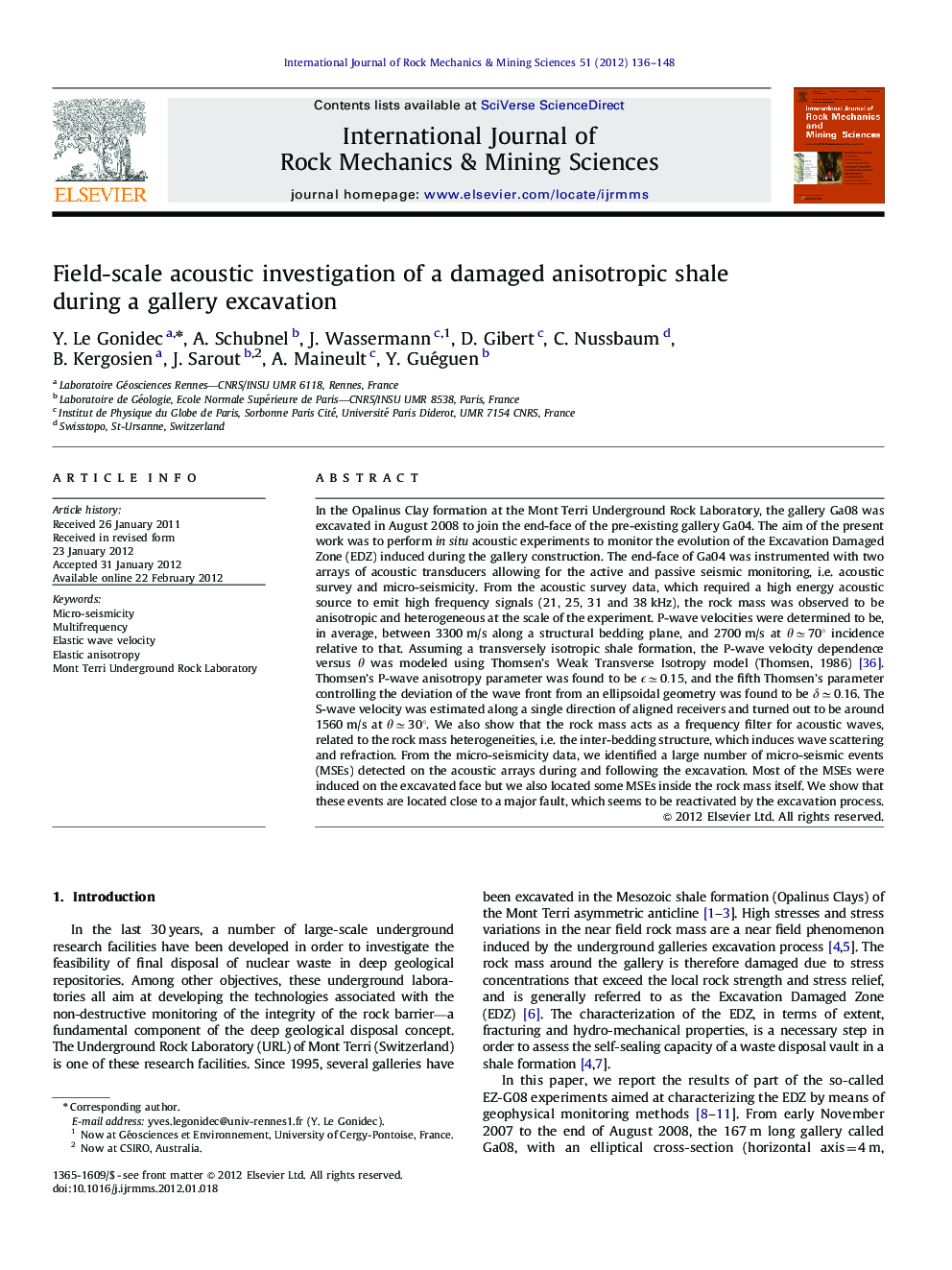| کد مقاله | کد نشریه | سال انتشار | مقاله انگلیسی | نسخه تمام متن |
|---|---|---|---|---|
| 809562 | 1468718 | 2012 | 13 صفحه PDF | دانلود رایگان |

In the Opalinus Clay formation at the Mont Terri Underground Rock Laboratory, the gallery Ga08 was excavated in August 2008 to join the end-face of the pre-existing gallery Ga04. The aim of the present work was to perform in situ acoustic experiments to monitor the evolution of the Excavation Damaged Zone (EDZ) induced during the gallery construction. The end-face of Ga04 was instrumented with two arrays of acoustic transducers allowing for the active and passive seismic monitoring, i.e. acoustic survey and micro-seismicity. From the acoustic survey data, which required a high energy acoustic source to emit high frequency signals (21, 25, 31 and 38 kHz), the rock mass was observed to be anisotropic and heterogeneous at the scale of the experiment. P-wave velocities were determined to be, in average, between 3300 m/s along a structural bedding plane, and 2700 m/s at θ≃70°θ≃70° incidence relative to that. Assuming a transversely isotropic shale formation, the P-wave velocity dependence versus θθ was modeled using Thomsen's Weak Transverse Isotropy model (Thomsen, 1986) [36]. Thomsen's P-wave anisotropy parameter was found to be ϵ≃0.15ϵ≃0.15, and the fifth Thomsen's parameter controlling the deviation of the wave front from an ellipsoidal geometry was found to be δ≃0.16δ≃0.16. The S-wave velocity was estimated along a single direction of aligned receivers and turned out to be around 1560 m/s at θ≃30°θ≃30°. We also show that the rock mass acts as a frequency filter for acoustic waves, related to the rock mass heterogeneities, i.e. the inter-bedding structure, which induces wave scattering and refraction. From the micro-seismicity data, we identified a large number of micro-seismic events (MSEs) detected on the acoustic arrays during and following the excavation. Most of the MSEs were induced on the excavated face but we also located some MSEs inside the rock mass itself. We show that these events are located close to a major fault, which seems to be reactivated by the excavation process.
► We design acoustic monitoring of geophysical processes during a gallery excavation.
► We identify a heterogeneous and anisotropic structure of the shale formation.
► Micro-seismic events are detected and localized in the medium.
► A major fault is reactivated by the excavation process.
Journal: International Journal of Rock Mechanics and Mining Sciences - Volume 51, April 2012, Pages 136–148